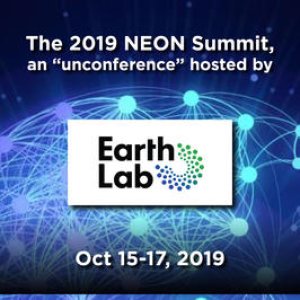Calling Ecology Nerds and Data Wizards: NEON Science Summit
October 3, 2019
On October 15-17, more than 150 ecologists, earth scientists, data analysts and programmers will descend on Boulder, CO for the NEON Science Summit. While the "unconference" is sold out, those interested in exploring ideas for using NEON data can still participate remotely.
An "Unconference" for NEON Data Users
The Summit is hosted by Earth Lab and University of Colorado–Boulder, with participation by the NEON program. It will be held in "unconference" style, with an agenda and discussions sessions driven bottom-up by participants.
Jennifer Balch, Director of CU-Boulder's Earth Lab, says, "This is the very first NEON Science Summit and it’s 100% driven by the NEON user community. Ecology finally has its Hadron Collider and we’re using it." The Summit is a great opportunity for the scientific community to dig into the data available from NEON and explore how these data can answer complex questions in ecology and earth science.
The Summit was funded through a National Science Foundation (NSF) grant, which covered the cost of hosting the event and travel costs for many of the participants. It is geared towards graduate students and early career scientists, with the aim of increasing data literacy in the earth science and ecology community. Participant-led working groups will explore ideas for using NEON data. Conference organizers hope to see collaborative teams form that will carry these ideas beyond the Summit.
Jennifer says that Boulder is the perfect place to host the event. "Between CU-Boulder and the NEON program headquarters, this town is chock-full of earth nerds, space geeks and data wizards. We want to create a space to bring people from multiple sectors together to advance data science in ecology. We’re living in a golden age of data. We need to get to an era of insight."
Options for Remote Participation in the NEON Science Summit
While the in-person program is at capacity, there are still opportunities to participate remotely. All plenary sessions will be live streamed. Some remote attendees will also be able to engage with the interactive working groups. Those interested in joining a working group remotely must apply in advance:
Anyone with questions about the Summit can contact Dawn Umpleby from CU Boulder.

